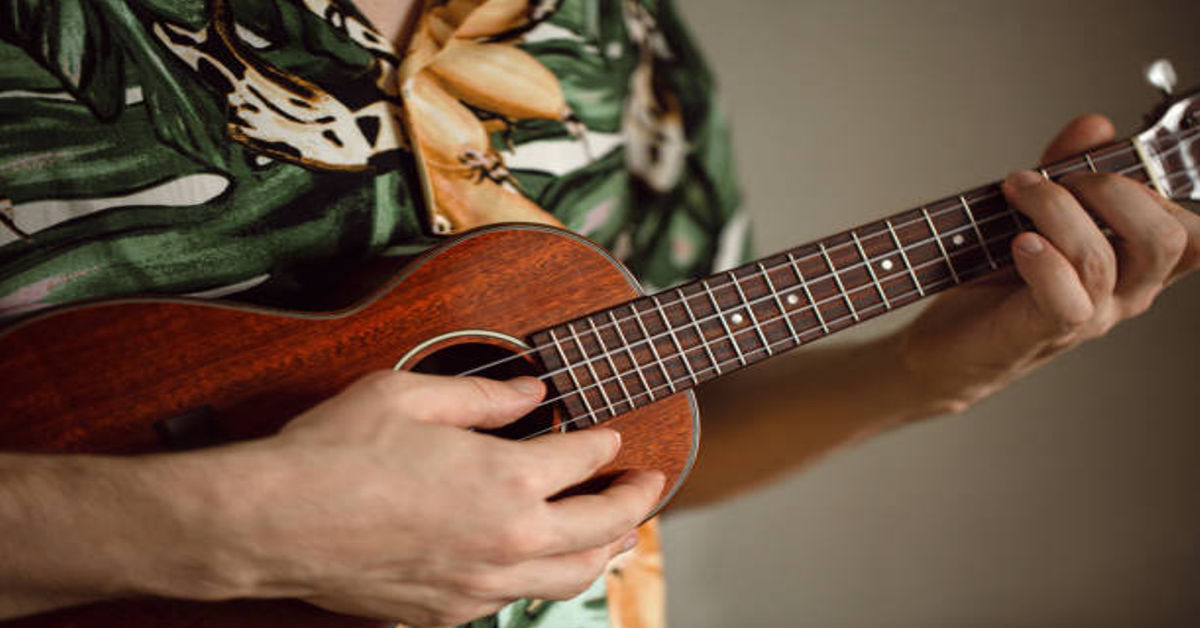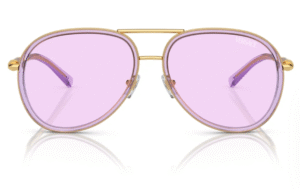The ukulele history is more than just a small, cheerful stringed instrument with a bright tone. It is a cultural icon, a historical artifact, and a symbol of global musical harmony. Over its 140-year journey, the ukulele has transcended its Hawaiian roots to become an international favorite across musical genres. To fully understand its charm and legacy, one must look beyond the smiling performers and sunny beaches to the complex blend of history, craftsmanship, migration, and music that shaped this four-stringed wonder.
1. The Origins: A Portuguese Beginning
The ukulele’s story begins not in Hawaii, but thousands of miles away on the Portuguese island of Madeira. In the mid-19th century, Madeira was known for its vibrant music culture. Local people played small guitar-like instruments called the machete, rajão, and cavaquinho. These instruments were portable, affordable, and commonly used in folk gatherings.
In 1879, three Portuguese cabinet makers—Manuel Nunes, José do Espírito Santo, and Augusto Dias—arrived in Hawaii aboard the ship Ravenscrag. They brought with them their woodworking skills and these small stringed instruments. The Hawaiian locals were instantly intrigued by the lively, rhythmic music that echoed through the streets of Honolulu.
Soon, these instruments became a sensation among native Hawaiians. The Portuguese immigrants began crafting local versions, adapting their design to suit Hawaiian tastes. Over time, the Hawaiians gave it a new name: “ukulele”, which roughly translates to “jumping flea.” This name may have been inspired by the musicians’ rapid finger movements across the fretboard or the energetic sound the instrument produced.
2. The Hawaiian Adaptation: Birth of the Ukulele
Once the instrument reached Hawaiian shores, it evolved in both design and spirit. The original Portuguese instruments had metal strings, but Hawaiian luthiers began using gut strings, which produced a softer, mellower sound. The body shape also changed slightly, becoming more curved and aesthetically refined.
King David Kalākaua, known as the “Merrie Monarch,” played a crucial role in popularizing the ukulele. As a patron of the arts and culture, he encouraged the use of Hawaiian instruments and traditional music in royal gatherings. The ukulele quickly became a symbol of Hawaiian pride and creativity.
By the late 19th century, it was more than an imported curiosity—it was a central part of Hawaiian musical identity. Songs written during this period blended traditional Hawaiian melodies with Western harmonic structures, creating a distinctive island sound that would later captivate the world.
Table 1: Comparison of Ukulele and Its Portuguese Ancestors
| Feature | Machete | Rajão | Ukulele |
|---|---|---|---|
| Origin | Madeira, Portugal | Madeira, Portugal | Hawaii |
| Number of Strings | 4 | 5 | 4 |
| String Material | Metal or gut | Gut | Gut/Nylon |
| Common Tuning | D-G-B-D | D-G-C-E-A | G-C-E-A |
| Sound Character | Bright, sharp | Rich, mid-range | Warm, mellow |
| Typical Use | Folk dances | Vocal accompaniment | Solo and ensemble |
3. The Early 20th Century: Ukulele Spreads to the Mainland
By the early 1900s, Hawaii was becoming a popular travel destination for Americans, especially after its annexation by the United States in 1898. Tourists were fascinated by the sound of Hawaiian music, which always featured the ukulele as a central instrument. Hawaiian performers began touring the mainland, bringing the cheerful sounds of the islands with them.
A major turning point came in 1915, at the Panama-Pacific International Exposition in San Francisco. Hawaiian musicians performed at the event, mesmerizing audiences with their exotic tunes and graceful performances. The ukulele became an instant sensation across the United States. Music stores began selling ukuleles by the thousands, and manufacturers like Martin, Kamaka, and Gibson started producing them in large quantities.
This was the start of the first ukulele craze. Magazines and newspapers described it as “the happiest instrument in the world.” It became a symbol of leisure, fun, and the carefree lifestyle associated with the Hawaiian islands.
4. The Jazz Age and the Ukulele Boom (1920s–1930s)
During the Roaring Twenties, the ukulele became a household name in America. Affordable, easy to learn, and compact, it appealed to both amateurs and professionals. College students, housewives, and even soldiers found it to be an accessible way to play popular songs. Sheet music publishers began printing ukulele chord diagrams alongside piano scores, and department stores sold inexpensive models made from laminated wood or even plastic.
Companies such as Harmony, Gretsch, and Regal produced millions of ukuleles during this era. Radio broadcasts helped further its fame, featuring ukulele players performing jazz standards and novelty songs.
Notably, the ukulele played a key role in Tin Pan Alley music, where composers crafted catchy tunes that defined early American pop. The instrument’s light, happy tone perfectly matched the spirit of the age—a combination of optimism, rebellion, and artistic experimentation.
5. Decline and Revival (1940s–1960s)
The Great Depression and the Second World War slowed the ukulele’s rise. Many factories shifted production toward wartime materials, and public interest in the ukulele waned as swing bands and big orchestras dominated the music scene.
However, the ukulele found a second life in the postwar years, particularly through television. Shows like Arthur Godfrey’s Talent Scouts (1940s–1950s) featured the host himself playing the ukulele, inspiring millions to pick up the instrument.
Manufacturers like Maccaferri introduced plastic ukuleles, which were inexpensive and durable, further widening access to the instrument. The 1950s also saw the rise of Hawaiian-themed pop culture—tropical shirts, tiki bars, and beach music—all of which prominently featured the ukulele.
In 1961, Tiny Tim’s eccentric performance of “Tiptoe Through the Tulips” revived national interest once more. Though sometimes treated as a novelty, this period ensured the ukulele never fully disappeared from popular consciousness.
6. The 1970s to 1990s: The Quiet Years
By the 1970s, the ukulele had largely slipped out of mainstream music. The rock revolution, electric guitars, and changing tastes left little room for the small acoustic instrument. However, in Hawaii, it remained an essential part of local music traditions.
Legendary Hawaiian artists like Eddie Kamae, Peter Moon, and Herb Ohta (Ohta-San) kept the flame alive. Their virtuosic playing styles elevated the ukulele to a respected musical instrument rather than a novelty toy. Ohta-San, in particular, fused jazz, classical, and Hawaiian influences, demonstrating the ukulele’s expressive range.
In Japan, too, the ukulele found a devoted following. Hawaiian music had long been popular in Japanese culture, and during the 1980s, Japanese manufacturers like Famous and Kiwaya began producing high-quality instruments. This helped establish the ukulele as an international instrument once again.
7. The Modern Renaissance (2000s–Present)
The 21st century has seen a massive global ukulele renaissance. With the rise of the internet, social media, and independent music, the ukulele found a new audience—young, creative, and digitally connected musicians who appreciated its accessibility and joyful tone.
One defining moment came in 2006 with Jake Shimabukuro’s viral video performance of “While My Guitar Gently Weeps.” His extraordinary technique and emotional expression stunned millions worldwide, proving that the ukulele could rival any other stringed instrument in complexity and power.
Artists like Israel Kamakawiwoʻole (IZ) brought further attention with his heartfelt rendition of “Somewhere Over the Rainbow / What a Wonderful World.” The song became a global anthem for peace and hope.
Today, the ukulele is played in classrooms, music festivals, and concert halls worldwide. Its presence in popular culture spans from indie pop and jazz to film soundtracks and orchestral collaborations.
Table 2: Ukulele Types and Their Characteristics
| Type | Size (Approx.) | Common Tuning | Tone Quality | Suitable For |
|---|---|---|---|---|
| Soprano | 21 inches | G–C–E–A | Bright, traditional Hawaiian sound | Beginners, traditional songs |
| Concert | 23 inches | G–C–E–A | Fuller tone, louder volume | Intermediate players |
| Tenor | 26 inches | G–C–E–A | Deep, rich tone | Advanced players, performances |
| Baritone | 30 inches | D–G–B–E | Warm, guitar-like sound | Guitarists, solo players |
8. Cultural Symbolism of the Ukulele
The ukulele is not just an instrument—it is a cultural ambassador. Its association with happiness, sunshine, and relaxation has made it a universal symbol of positivity. In Hawaii, however, it represents something deeper: the blending of cultures. The ukulele embodies the meeting of Portuguese craftsmanship, Hawaiian spirit, and American innovation.
It has also become a key tool for music education. Because of its small size and simple chord structure, it’s an ideal first instrument for children. Schools worldwide have integrated the ukulele into their music programs, nurturing the next generation of musicians.
9. Famous Ukulele Players Across Eras
Table 3: Influential Ukulele Artists
| Era | Artist | Contribution |
|---|---|---|
| 1910s–1930s | Roy Smeck | One of the earliest virtuosos; popularized ukulele in vaudeville and early film. |
| 1940s–1950s | Arthur Godfrey | TV host who inspired millions to play the ukulele. |
| 1960s–1970s | Herb Ohta (Ohta-San) | Introduced jazz and classical ukulele styles. |
| 1980s–1990s | Peter Moon | Helped modernize Hawaiian ukulele music. |
| 2000s–Present | Jake Shimabukuro | Revolutionized ukulele technique with viral performances. |
| 2000s–Present | Israel Kamakawiwoʻole (IZ) | Brought emotional depth and cultural pride to global audiences. |
Each of these musicians contributed uniquely, pushing the instrument’s limits and influencing countless others. Their legacy continues to inspire players of all ages and backgrounds.
10. Ukulele Construction and Craftsmanship
The ukulele’s design may seem simple, but building one requires precision and artistry. The instrument’s tone depends on multiple factors, including wood type, string material, and craftsmanship.
Key Components:
- Body – Usually made of koa (traditional Hawaiian wood), mahogany, or spruce. Koa gives a bright, resonant sound; mahogany offers warmth.
- Neck – Often crafted from mahogany or maple, providing stability and comfort.
- Strings – Originally made from gut, modern strings use nylon or fluorocarbon for durability and consistent tone.
- Bridge and Nut – Critical for maintaining string tension and transmitting vibration.
- Finish – A glossy or satin coat protects the wood while influencing tone projection.
Ukulele makers, known as luthiers, often treat each build as a work of art. Companies like Kamaka, KoAloha, Kala, and Martin continue to produce instruments that balance tradition with innovation. Custom ukuleles can range from $500 to over $5,000, depending on craftsmanship and materials.
11. The Ukulele in Popular Culture
From early Hollywood films to modern YouTube channels, the ukulele has always had a strong presence in popular culture. In the 1930s, stars like Cliff Edwards (“Ukulele Ike”) brought it into animated films, including Disney’s early productions.
Decades later, it reappeared in unexpected genres—pop, folk, indie, and even rock. Artists such as Eddie Vedder, Vance Joy, and Grace VanderWaal have all used the ukulele as a core element of their music. The instrument’s ability to adapt across styles and generations has ensured its continued relevance.
Moreover, social media has democratized music creation. Platforms like YouTube and TikTok have fueled a massive community of ukulele players sharing tutorials, covers, and original songs. The ukulele’s accessibility makes it a perfect fit for this era of creative sharing.
12. Global Influence and Educational Role
Today, the ukulele’s reach extends far beyond Hawaii or the United States. In countries like Japan, Canada, the United Kingdom, and Australia, ukulele festivals attract thousands of enthusiasts.
The instrument has also become a staple in music therapy. Its soothing sound and ease of play provide comfort for individuals with anxiety, dementia, or emotional challenges. In schools, the ukulele is used to teach music theory, rhythm, and coordination in an engaging, non-intimidating way.
This global adoption underscores the instrument’s universal appeal. Whether strummed on a sunny beach or in a classroom, the ukulele continues to connect people through music.
13. The Future of the Ukulele
As musical boundaries continue to dissolve, the ukulele’s future looks bright. Advances in technology have led to innovations such as electric ukuleles, carbon fiber models, and even hybrid instruments blending ukulele and guitar features.
Musicians are exploring new tunings, extended-range ukuleles (with 6 or 8 strings), and digital effects. Yet, at its core, the ukulele remains a symbol of simplicity and joy. Its global resurgence shows that the world still cherishes instruments that are approachable, expressive, and deeply human.
Conclusion: The Ukulele’s Timeless Song
The ukulele’s history is a remarkable tale of migration, adaptation, and transformation. From the Portuguese shores of Madeira to the royal courts of Hawaii, from jazz-era dance halls to modern concert stages, it has carried a melody of unity and happiness.
Its enduring appeal lies not only in its sound but in what it represents—a meeting of cultures, a celebration of creativity, and an invitation to play. The ukulele has indeed “jumped” across boundaries and generations, proving that music, like joy, knows no limits.
Frequently Asked Questions (FAQs)
1. Who invented the ukulele?
The ukulele was developed in Hawaii in the late 19th century by Portuguese immigrants, particularly Manuel Nunes, José do Espírito Santo, and Augusto Dias, who adapted their native machete instrument to create the first ukuleles.
2. Why is it called a ukulele?
The word “ukulele” comes from the Hawaiian language, often translated as “jumping flea,” referring to the rapid finger movements of players across the fretboard.
3. What are the different types of ukuleles?
There are four main types: soprano, concert, tenor, and baritone. Each differs in size, tone, and playability, catering to different skill levels and musical styles.
4. What makes the ukulele unique compared to other instruments?
Its small size, simple chord structure, and bright tone make it one of the most approachable and cheerful instruments. It’s also deeply tied to Hawaiian and global cultural heritage.
5. Is the ukulele suitable for beginners?
Yes, the ukulele is widely regarded as one of the best instruments for beginners. With just four strings and straightforward chords, new players can learn songs quickly and build musical confidence.









